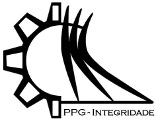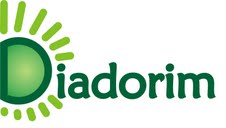COMPUTATIONAL FLUID DYNAMICS OF A FLUID BED EMPLOYING TUNED GAS-SOLID DRAG MODELS
DOI:
https://doi.org/10.26512/ripe.v2i12.21345Keywords:
Tuned drag model. Adjusted drag model. Di Felice. Syamlal-O’Brien. Fluidized bed.Abstract
Fluidized beds are devices in which a fluid flows from the bottom through a bed of particles, keeping them under suspension. Fluidized beds find many applications as reactors for combustion and gasification of solid fuels. For a given fluid-particulate combination, there is a minimum fluidization velocity (U mf) which exerts a drag force that equals the weight of the bed, fluidizing the system. Therefore, it is possible to calculate gas-solid drag forces parameters from a minimum fluidization velocity (Umf) obtained experimentally. In the present work, the objective was to tune gas-solid drag correlations to be used in the Computational Fluid Dynamics (CFD) of a fluidized bed employing the Umf and to analyze the improvement of CFD results. The particles employed were one of Geldart-B (sand-like) and two of Geldart-D (spoutable) types, fluidized in a cylindrical riser with 0.114 m internal diameter. The CFD multiphase model employed was the Two-Fluid-Model (TFM). In this model both gas and solid phases are assumed interpenetrating continua, mapped along the domain via its volume fraction, and the Kinetic Theory of Granular Flows (KTGF) is used to model solids phase viscosity term. The force interactions between phases are modeled using gas-solid drag correlations, which in this work were based on Syamlal-O'Brien and Di Felice models. A finite volume method CFD code was used to perform the simulations. The simulations for superficial velocity of 1.5 Umf was performed in order to confront experimental and numerical results of pressure drop and bed height. So far tuned models were better than the original ones in the prediction of fluidization curves (pressure drop versus superficial velocity), and in the prediction of bed expansion and bubble formation.
References
Agrawal, K., Loezos, P. N., Syamlal, M., Sundaresan, S., 2001 The role of meso-scale structures in rapid gas-solid flows. J Fluid Mech vol. 445 pp. 151”“185
Dalla Valle, J.M., 1948, Micromeritics, Pitman, London.
Di Felice, R., 1994. The voidage function for fluid-particle interaction systems. Int. J. Multiphase Flow. vol. 20, n. 1, p. 153”“159. Ergun, S., 1952. Fluid flow through packed columns. Chem. Engineering Progress, v.48,pp. 89-94.
Esmaili, E.; Mahinpey, N., 2011. Adjustment of drag coefficient correlations in three dimensional CFD simulation of gas-solid bubbling fluidized bed. Advances in Engineering Software, v. 42, n. 6, p. 375”“386.
Geldart, D.,1973. Types of gas fluidization. Powder Technology, v. 7, n. 5, p. 285”“292.
Grace, J. R.; Taghipour, F., 2004. Verification and validation of CFD models and dynamic similarity for fluidized beds. Powder Technology, v. 139, n. 2, p. 99”“110.
Lun, C. K. K., Savage, S. B., Jeffrey, D. J., Chepurniy, N., 1984. Kinetic theories for granular flow: inelastic particles in Couette flow and slightly inelastic particles in a general flowfield. J Fluid Mech. vol. 140, pp. 223”“256.
Pannala, S., Syamlal, M., & O’Brien, T. J., 2011. Computational Gas-Solid Flows and Reacting Systems: Theory, Methods and Practice. Engineering Science Reference. Hershey-PA.
Syamlal, M., O’Brien, T. J., 1987. The derivation of a drag coefficient formula from velocity-voidage correlations. Unpublished report of April 1987.
Syamlal, M., O’Brien, T. J., 1988. Simulation of granular layer inversion in liquid fluidized beds Int. J. Multiphase Flow. vol. 14, n. 4, pp. 473-481.
Taghipour, F.; Ellis, N.; Wong, C., 2005. Experimental and computational study of gas-solid fluidized bed hydrodynamics. Chemical Engineering Science, v. 60, n. 24, p. 6857”“6867.
Wen, C. Y., Yu, Y. H., 1966. A generalized method for predict minimum fluidization velocity. AIChE Journal. v. 12, n. 3, pp. 610-612.
Downloads
Published
Issue
Section
License
Given the public access policy of the journal, the use of the published texts is free, with the obligation of recognizing the original authorship and the first publication in this journal. The authors of the published contributions are entirely and exclusively responsible for their contents.
1. The authors authorize the publication of the article in this journal.
2. The authors guarantee that the contribution is original, and take full responsibility for its content in case of impugnation by third parties.
3. The authors guarantee that the contribution is not under evaluation in another journal.
4. The authors keep the copyright and convey to the journal the right of first publication, the work being licensed under a Creative Commons Attribution License-BY.
5. The authors are allowed and stimulated to publicize and distribute their work on-line after the publication in the journal.
6. The authors of the approved works authorize the journal to distribute their content, after publication, for reproduction in content indexes, virtual libraries and similars.
7. The editors reserve the right to make adjustments to the text and to adequate the article to the editorial rules of the journal.









